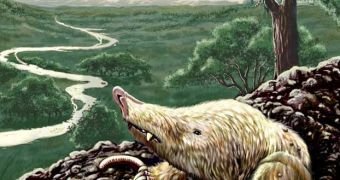New study reveals the so-called “grave robber,” an animal with an aspect similar to that of a mole, survived the circumstances that made the dinosaurs disappear.
Scientifically called Necrolestes patagonensis (an approximate equivalent of “grave robber”), the mysterious creature appears to have led a much longer life than initially stated by paleontologists.
With a longevity 45 million years higher than the one approximated by scientists, Necrolestes was one of the species to have experienced the event of dinosaur mass extinction, Live Science reports.
However, scientists behold but very few data on the animal's history. After decades of studies, Necrolestes' place among the mammals was doubtful.
“Necrolestes is one of those animals in the textbooks that would appear with a picture and a footnote, and the footnote would say 'we don't know what it is,'” declared John Wible, a mammalogist from the Carnegie Museum of Natural History.
Researchers came close to a revelation after, in 2011, a fossil registering a close resemblance to the peculiar Necrolestes was found in South America by a group of scientists led by Guillermo Rougier, professor at the University of Louisville.
The newfound fossil was dated at over 100 million years ago and was proved to be part of a perished group of mammals living in Late Cretaceous and early Paleocene.
The discovery showed that Necrolestes haven't died at the same time with the dinosaurs, as previously thought. On the contrary, they lived for other 45 million years.
Scientists say an explanation to this uncommon event may be based on Necrolestes' underground way of living.
“There's no other mammal in the Tertiary of South America that even approaches its ability to dig, tunnel, and live in the ground. It must have been on the edges, in an ecological niche that allowed it to survive,” explained Prof. Wible.

 14 DAY TRIAL //
14 DAY TRIAL //